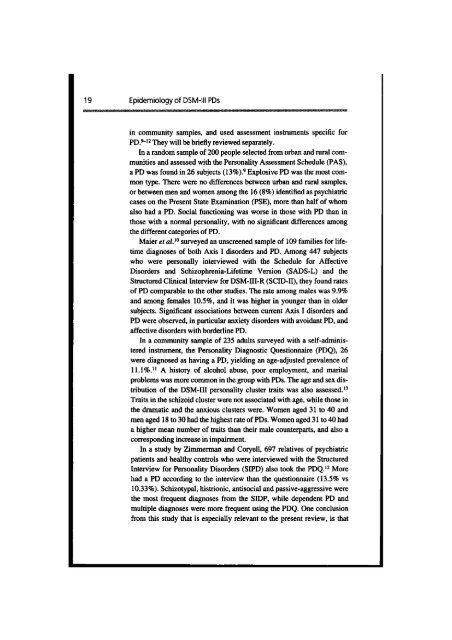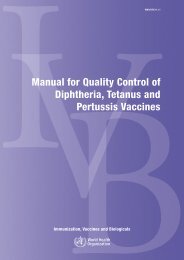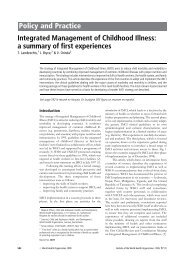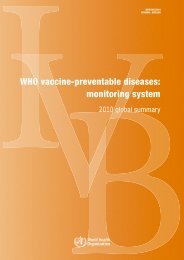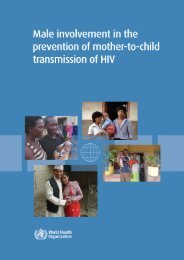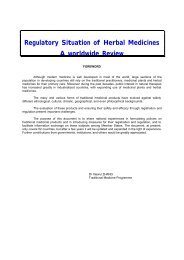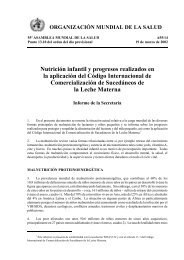IPDE - Extranet Systems - World Health Organization
IPDE - Extranet Systems - World Health Organization
IPDE - Extranet Systems - World Health Organization
You also want an ePaper? Increase the reach of your titles
YUMPU automatically turns print PDFs into web optimized ePapers that Google loves.
19 Epidemiology of DSM-Ill PDs<br />
in community samples, and used assessment instruments specific for<br />
PD."'They will be briefly reviewed separately.<br />
In a random sample of 200 people selected from urban and mm1 communities<br />
and assessed with the Personality Assessment Schedule (PAS),<br />
a PD was found in 26 subjects (13%)? Explosive PD was the most common<br />
type. There were no differences between urban and rural samples,<br />
or between men and women among the 16 (8%) identified as psychiatric<br />
cases on the Resent State Examination (PSE), more than half of whom<br />
also had a PD. Social functioning was worse in those with PD than in<br />
those with a normal personality, with no significant differences among<br />
the different categories of PD.<br />
Maier et al.1° surveyed an unscreened sample of 109 families for lifetime<br />
diagnoses of both Axis I disorders and PD. Among 447 subjects<br />
who were personally interviewed with the Schedule for Affective<br />
Disorders and Schizophrenia-Lifetime Version (SADS-L) and the<br />
Structured Clinical Interview for DSM-III-R (SCID-U), they found rates<br />
of PD comparable to the other studies. The rate among males was 9.9%<br />
and among females 10.5%, and it was higher in younger than in older<br />
subjects. Significant associations between current Axis I disorders and<br />
PD were observed, in particular anxiety disorders with avoidant PD. and<br />
affective disorders with borderline PD.<br />
In a community sample of 235 adults surveyed with a self-administered<br />
instrument, the Personality Diagnostic Questionnaire (PDQ), 26<br />
were diagnosed as having a PD. yielding an age-adjusted prevalence of<br />
11.1%." A history of alcohol abuse, poor employment, and marital<br />
problems was more common in the group with PDs. The age and sex distribution<br />
of the DSM-111 personality cluster traits was also assessed."<br />
Traits in the schizoid cluster were not associated with age, while those in<br />
the dramatic and the anxious clusters were. Women aged 31 to 40 and<br />
men aged 18 to 30 had the highest rate of PDs. Women aged 31 to 40 had<br />
a higher mean number of traits than their male counterpm, and also a<br />
corresponding increase in impairment.<br />
In a study by Zimmerman and Coryell, 697 relatives of psychiatric<br />
patients and healthy controls who were interviewed with the Structured<br />
Interview for Personality Disorders (SIPD) also took the PDQ.12 More<br />
had a PD according to the interview than the questionnaire (13.5% vs<br />
10.33%). Schizotypal, histrionic, antisocial and passive-aggressive were<br />
the most frequent diagnoses from the SIDP, while dependent PD and<br />
multiple diagnoses were more frequent using the PDQ. One conclusion<br />
from this study that is especially relevant to the present review, is that


